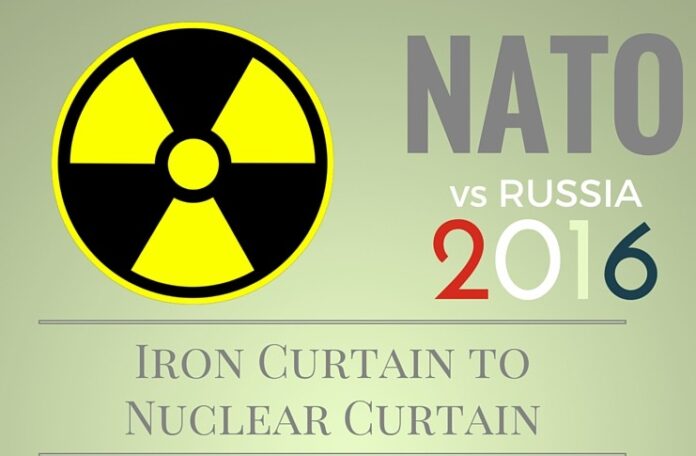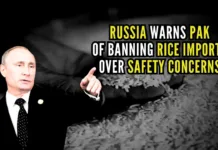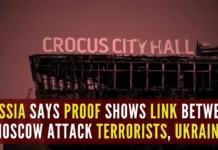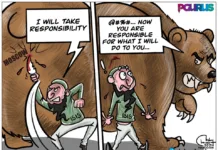
[dropcap color=”#008040″ boxed=”yes” boxed_radius=”8px” class=”” id=””]U[/dropcap]kraine is still the focal point of instability in Eastern Europe. It is the frontier from which the world has moved from an Iron to Nuclear Curtain. Officially, the US and its NATO allies have established a nuclear defense shield with Poland at one end and Romania at the other end. Robin Emmott1 noted that the US spent $800m to activate the Romanian centre with parts being sent in crates from New Jersey. The control centre for these ships, planes and space complex will be Germany. US permanent representative to NATO Douglas Lute added that the shield covered Eastern Europe, including the Baltic States. The plan for this shield was exposed when Hillary Clinton was US Secretary of State from 2009 to 2013.
In the last two years, 2014 and 2015, the Russians, too, modernised their land, space and underwater weapons to produce their missile defense system. The most deadly weapon is their new hypersonic weapon, U-71, that can outdo, so the Russians claim, any existing missile system.2 Military magazine Jane notes that the U-71 has a speed of 11,000 km/hr and can carry nuclear warheads. It will be deployed fully at Dombarovsky ICBM base, just north of Kazakhstan, from 2020 to 2025. Putin warned that Poland and Romania could be caught in “crosshairs” of Russian rockets since the NATO shield is a threat to Russia’s national security.
Given these two nuclear defense systems, we need to dig deeper to find out why some weak leaders, especially Ukrainian, are openly talking of World War III. Pilot Nadezhda Savchenko who was sentenced to 22 years in prison for allegedly killing two Russian journalists on June 17, 2014 said, “I had the feeling that WW III could happen, and I still have this feeling.” Thanks to intervention by US President Obama and French President Francois Holland, Savchenko was released in exchange for two Russians Yevgeny Yerofeyev and Alexander Alexandrov on May 25, 2016.3 Savchenko is regarded as a national heroine and is expected to be Ukraine’s next President.
[dropcap color=”#008040″ boxed=”yes” boxed_radius=”8px” class=”” id=””]W[/dropcap]hen Kiev warned the world of a possible large scale war with Russia, 4 the Speaker of the Duma Sergei Naryshkin said that the dispute over the two Ukrainian republics seeking autonomy has been boiling for two years, when, if Russia wanted, it could occupy eastern Ukraine in four days, the most. Russia wants to make it clear that it has no intention of annexing the two Ukrainian republics and it does not see how a large-scale war emerges from this situation. A major war will not be between Russia and Ukraine, but between NATO and Russia. According to Professor Paul Craig Roberts5 the plan for war is being fueled by combative neo-cons who cannot see an end to the Cold War. The neo-cons want to see the BRICS, their nearest rivals in power, in disarray.
Some see NATO as a redundant institution: underpowered and overextended.6 Many of the 28 members cannot afford to subscribe the required 2% of GDP for NATO’s expenditure. In addition, NATO cannot be decisive as 28 votes are needed for major actions. Hence, the urge for Britain to exit the EU.
NATO’s defense shield in Europe has three aspects to it: the nuclear shield, war games by its members and the ability of Israel to plug into the system.
Poland was willing to build its nuclear shield alone if it did not get external help. Fortunately for Poland, NATO has cooperated in erecting its Tarcza Polski or Shield of Poland.7 Poland spent $273 million to upgrade its previously delivered systems. In December 2015, Poland ordered 79 Poprad self-propelled surface-to-air missile systems. Poland built its own GROM MANPADS. Poland’s Shield has three tiers: tier 1 consists of shoulder-fired Poprad, which resembles the Russian SA-18, with Polish improvements. The Pilicia is a radar-aided gun system. The Poprad can also be mounted on trucks. Tier 2 consists mainly of 11 batteries of ‘short range’ air defense missiles, without antiballistic missile capabilities. Israel has supplied its SPYDER and RAFAEL systems. Tier 3 consists of medium-range missiles.
[dropcap color=”#008040″ boxed=”yes” boxed_radius=”8px” class=”” id=””]A[/dropcap]t a cost of $800 million, the US is assisting NATO to build its second base for its nuclear shield in Romania, operational in 2018.8 US representative to NATO Douglas Lute confirmed that most of the parts needed were shipped from New Jersey. Russia’s interpretation of NATO’s strategy is that the ABM system is to pressure Russia by removing its first strike threat, which is similar to the Games Theory Equilibrium.
The US claimed that the shield was a protection against Iran. Russia opposed this view since Iran’s nuclear development is under international supervision. The location of Romania suggests that NATO will use the Black Sea for its naval exercises and, or attacks. Russia’s response is that it will never let the Black Sea be a NATO lake. NATO also says that the shield is a protection for Eastern Europe. Again, Russia’s response is that the ‘deter and dialogue’ strategy is not compatible with NATO’s military exercises near its border.9
One has to include Israel’s Dimona as the third leg of the NATO shield. Consequently, one has to deduce that the Iron Curtain is a Nuclear Curtain stretching from Poland to Deveselu in Romania and then to Israel. The nuclear curtain temporarily separates Europe from Asia as Russia’s political estrangement is treated as an Asiatic phenomenon. One has only to think of the effects of Hiroshima, Nagasaki, and Chernobyl to realise why Kazakh leader Nursultan Nazarbayev noted that this is our ‘last chance’ before self-destruction.
A subsidiary policy of the Nuclear Shield is for smaller East European countries to form regional military alliances to foil any invasion. The drills in Georgia in May 2016 included the US, Britain and Georgia at a former Soviet military base, Vaziani. The largest military drills since the end of the Cold War were the Anaconda 2016 that included 31,000 multinational troops. The Baltic countries had their own drills. Together, these drills are part of the Readiness Action Plan (RAP).10
[dropcap color=”#008040″ boxed=”yes” boxed_radius=”8px” class=”” id=””]I[/dropcap]srael has turned extreme right in preparation for the Shield.11 Benjamin Netanyahu had a slim majority of one. He therefore appointed Avigdor Lieberman, leader of Yisrael Beiteinu Party, as Defense Minister. Netanyahu’s support broadened to the extent that he could extend his role as Prime Minister comfortably. Lieberman was affectionately called the “bouncer from Moldova” and his connections with Moldova part of which is annexed by Romania would be useful. Lieberman pushed for legislation that would oust Arab parties from government for their anti-Israel sympathies and actions.12 Another extremist, Rabbi Yehuda Glick replaced the former Defense Minister, Moshe Yaalon. Glick called for Jewish prayers at Muslim’s holy shrine, the Al Aqsa Mosque, an extra-sensitive issue for Muslims.13 Yaalon opposed Netanyahu’s views on how Israel should be run: he wanted, for instance, the IDF to be accountable to Israeli laws. In Yaalon’s own words, “I fought with all my might against manifestations of extremism, violence and racism in Israel society, which are threatening its sturdiness and also trickling into the IDF, hurting it already.”14 Jerusalem Post reports that 64% of Israelis think that Yaalon was fired to make room for Lieberman. Yaalon was offered the post of Foreign Minister but refused to take it.
Netanyahu’s actions show that he is preventing the unity of Hamas and Fatah15 in readiness for a war on Hamas.16 Netanyahu is also plugged into the issues of Ukraine and the NATO shield. In the meantime, Netanyahu, the French and the US have been trying to negotiate separately a two-state solution on each of their respective terms.
The Russians observed that these events in Eastern Europe have indirectly strengthened China. The US has underestimated China’s strength. While the US has been busy with the NATO shield, China has upgraded its weaponry and bought the latest from Russia. Take one example, perhaps the most important one, the control of the South China Sea. The US dispatched several aircraft carriers like the USS John C. Stennis to the militarized islands as a sign of support to Viet Nam, Philippines, Malaysia, Taiwan and Brunei who also have a stake in the waters. 17 China gave the US a blunt warning: “don’t stir up any conflict” or else be prepared for a repeat of the Korean and Viet Nam war. China objected to its encirclement and will not accept the ruling of the Tribunal at the Permanent Court of Arbitration, Hague, which is likely to favour the American side. Meanwhile, Chinese warplanes have buzzed a US spy plane near Hainan Island, 18 just as the Russians did in the Black Sea.
ASEAN countries anticipated such confrontations and wanted, before the Pivot to Asia, the US to balance Chinese power. The Vietnamese, too, are wondering whether Russia can play a role in controlling Chinese power in Asia. But Russia has just begun trading with Asia, and it depends on Chinese cash to bolster its falling rouble. China is too powerful economically, militarily, and intellectually to be playing second fiddle in Asia. It is China, not Russia, that is taking the lead to weaken the dollar as an international currency. The US is concerned about a ‘resurgent Russia and a very aggressive China’ who want to keep the US out of their spheres of influence, notes US Air Combat Command Commander General Herbert Carlisle.19
Salman Sheikh20 implies that many countries should be worried about China’s global reach. India would be concerned about military cooperation among China, Pakistan and Tajikistan, the building of the Gwadar port and China’s presence in Colombo port; Israel will be concerned with 6000 Chinese soldiers on its doorstep, in Djibouti, where the Chinese pay $20 million in rent, and have lent $1b for infrastructure projects; Australia would wonder why Papua New Guinea has Chinese debt equivalent to 40% of its GDP; and the US would wonder why Tonga holds Chinese debt equal to half of its GDP, and where the Chinese are building a naval base. Chinese nuclear-powered Shang-class and Song-class subs have been spotted in Colombo, which together with Gwadar are the gateway to the Indian Ocean.
[dropcap color=”#008040″ boxed=”yes” boxed_radius=”8px” class=”” id=””]P[/dropcap]resident Obama has adroitly altered his stance and sought a peaceful solution to the South China Sea problem. Instead of a “solitary regional hegemon,” he has, as in Eastern Europe, propagated a “shared power strategy.” Viet Nam has been allowed to buy weapons; Japan has been coaxed to be more belligerent, and to work with South Korea to be the centre of power in the Far East.
Within Eurasia, Russia sees the re-emergence of the Ottoman and British empires. Three power tiers have been sprouting up within the Muslim world. At the bottom, is the Islamic State and its strange interpretation of Islam. Most Muslim clerics and governments have denounced IS actions.
Turkey seems to have assumed the leadership of the second tier by supporting reactionary groups in Syria, and the Caucasus. Turkey seems to have added the royal kingdoms to its side as it has transformed a Doha military base for establishing peace in the region. Erdogan’s presence at Mohamad Ali’s funeral can be seen as part of this leadership role. In the Sunni-Shia conflict, Turkey is definitely on the Sunni side.
The third tier is the Organisation of Islamic Cooperation. This organisation is best suited to bridge the gap between Sunnis and Shias as it role has been mainly cultural and commercial. OIC could and should develop into a federal state like the EU. Muslim rivals might disagree, but if it does mature into a federal state, it would be an essential part of the international system, do much to employ its youth in lucrative jobs, and strengthen it culture.
In conclusion, it seems likely that unhindered nuclear competition among various empires, American, British, Israeli, Russian, Chinese, Latin and Islamic, is likely to lead to self-destruction. A nuclear threat through a dirty bomb is also likely to come from terrorists on a European city, according to Sara Malm.21
References
-
Robin Emmott, “US activates Romanian missile defense site, angering Russia,” reuters.com, May 13, 2016.
-
“Russia’s new hypersonic weapon U-71 will outdo any missile defense system,” pravda.ru, 12.5.2016. Also read “Russia creates new mega-powerful ballistic missile,” pravda.ru, 9.8.2011.
-
“Savchenko: “WW III will return Crimea to Russia,” pravda.ru, 27.5.2016.; read also “Savchenko returns to Ukraine, pledges more war,” pravda.ru, 25.5.2016.
-
“Kiev warns world of possible large scale war with Russia,’ pravda.ru, 31.5.2016.
-
Paul Craig Roberts, “How American neo-conservatives destroyed mankind’s hopes for peace,” globealresearch.ca, April 18, 2016.
-
Victor Davis Hanson, “Is NATO worth preserving?” washingtonpost.com, April 13, 2016.
-
Defense Industry Daily Staff, “If necessary alone: the shield of Poland,” defenseindustrydaily.com, December 21, 2015.
-
Robin Emmott, “US activates Romanian missile defense site, angering Russia,” reuters.com, May 13, 2016.
-
Tom Wyke, “NATO assembles its biggest military buildup since Cold War as more troops are deployed in Eastern Europe to deter Russia,” dailymail.co.uk, May 20, 2016.
-
Mark Sleboda, “Are NATO’s massive war games on Russia’s borders a pretext to World War III?” sputniknews.com, 27.5.2016; see also, “NATO promises to ‘brilliantly jump’ on Russia,” pravda.ru, 20.5.2016.
-
“Extremists have taken over Israel,” haaretz.com, May 20, 2016; see also Jonathan Freedland, “Israel has turned right and exposed the battle within,” theguardian.com, May 20, 2016.
-
“New laws allows Netanyahu to oust Arab parliamentarians,” middleeastmonior.com, February 6, 2016.
-
John, “Moshe Yaalon resigns as Israel’s Defense Minister,” turkishamericannews.com, 20.5.2016.
-
Jonathan Lis, “Outgoing Defense Minister disagreement on ‘moral and professional issues’” …
-
Jerusalem Post, February 9, 2016.
-
“Netanyahu preparing war against Hamas despite unprecedented quiet in Gaza,” ynetnews.com, March 2016.
-
Vitaliy Ankov, “What role will Russia play in the US-Chinese South China Sea drama?” sputniknews.com, 5.3.2016.
-
Chris Summers, “China’s blunt warning to America: We’re ready for repeat of Korean War or Vietnam if US military stirs up any conflict in South China Sea,” dailymail.co.uk, May 20, 2016.
-
“US concerned about ‘resurgent Russia and very aggressive China,’” pravda.ru, May 23, 2016.
-
Salman Rafi Sheikh, “Regional powers take steps as China’s military eyes global,” atimes.com, May 29, 2016.
-
Sara Malm, “The threat of a NUCLEAR terror attack … obtain materials for a dirty bomb, warns international think-tank,”dailymail.co.uk, June 9, 2016.
- Part2 – China’s Road to Superpower status - July 20, 2017
- Part1 – China’s Road to Superpower status - July 18, 2017
- P2 – Can or should Qatar be ostracised? - June 29, 2017










